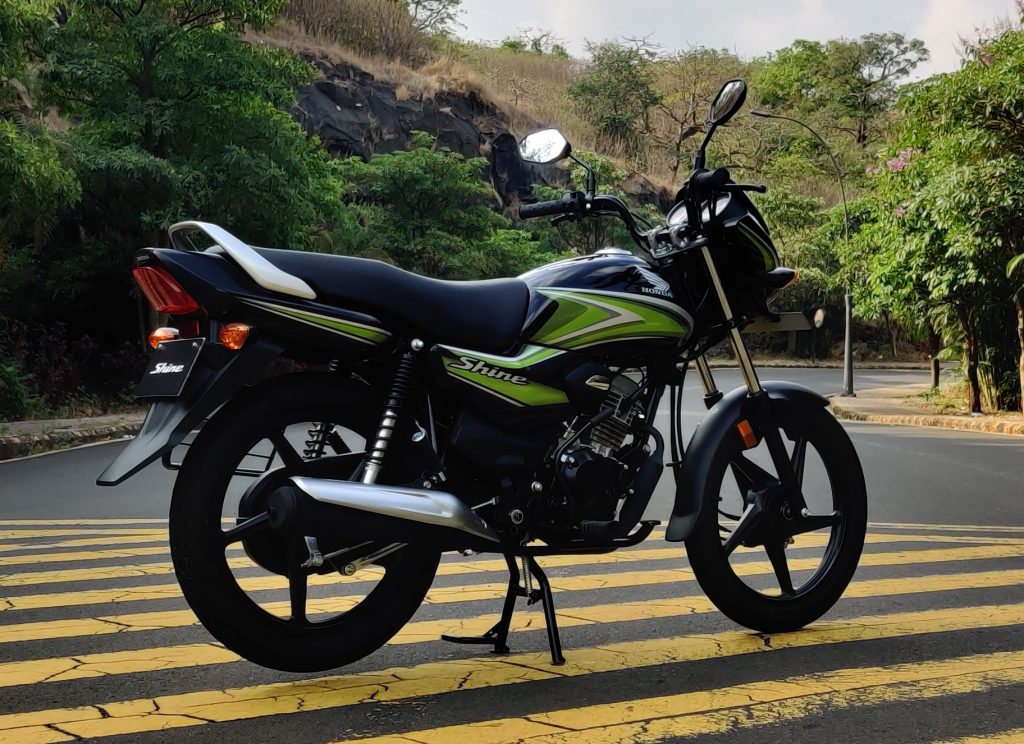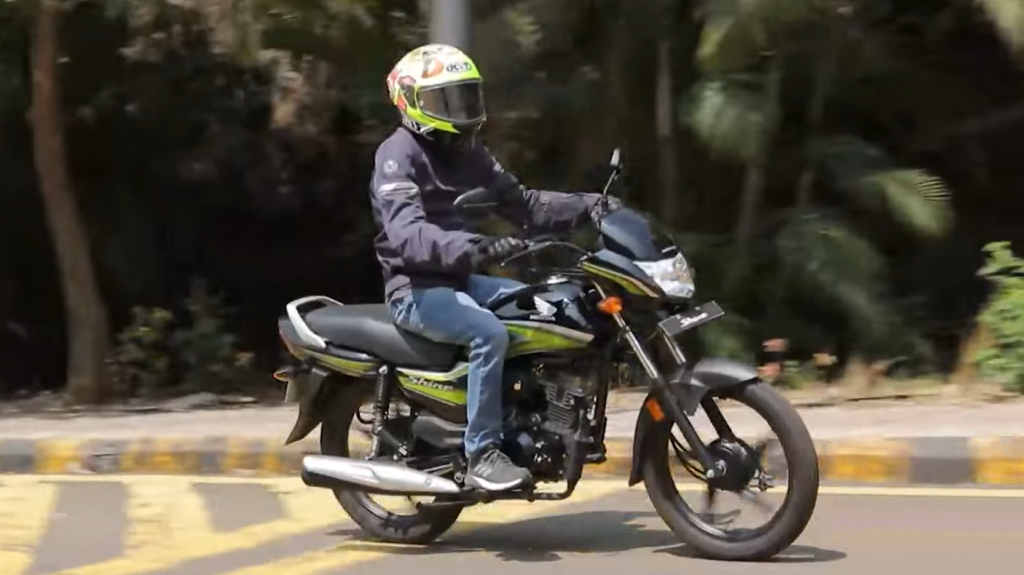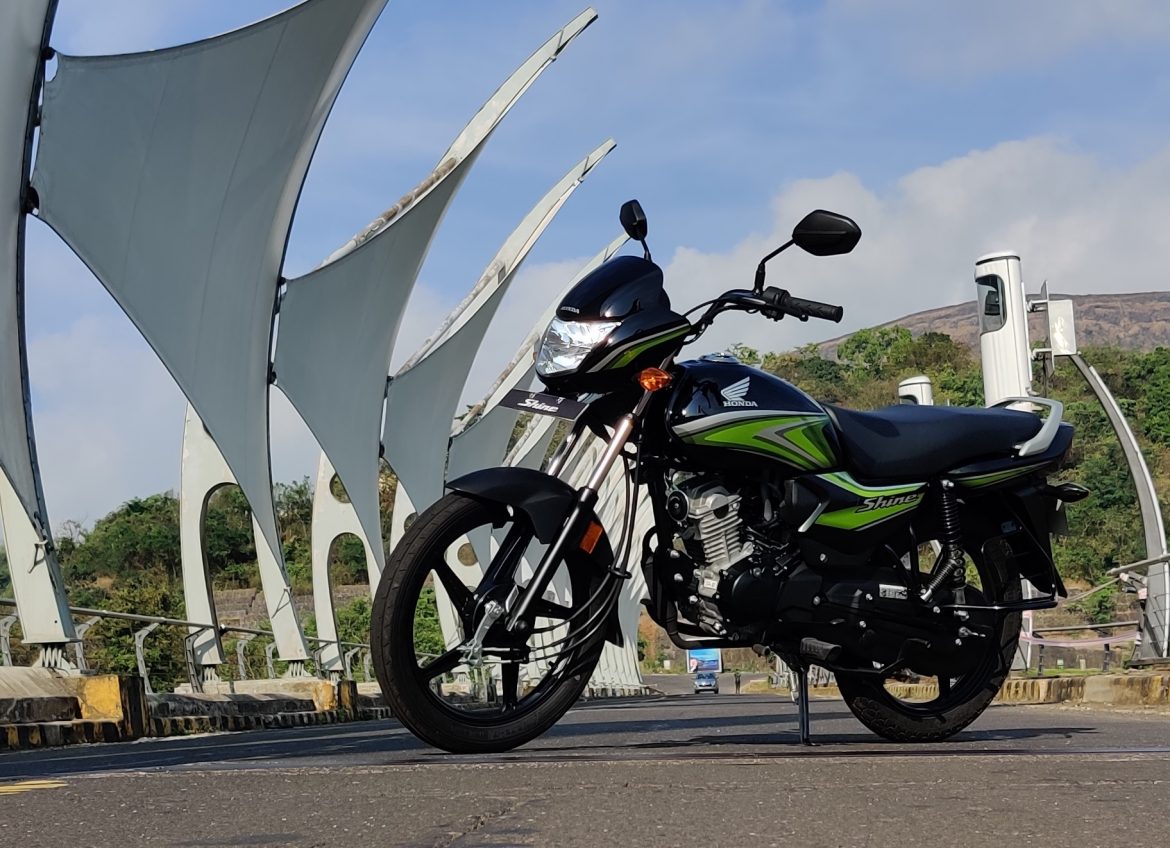LONAVALA: With the new Shine 100, Honda has entered the 100 CC commuter segment that it has avoided since it embarked on its solo journey in India over a decade back. Then why is the Japanese automaker considering this segment now?
There are more reasons than one. Increased prices due to rising emission standards, cut-throat competition in the market, and that this segment still counts for the largest pie of two-wheeler sales in the Indian two-wheeler market space are some pivotal points.
The Shine 100 has gone on sale in India at 65,000 rupees and will be available in only one version which features alloy wheels and an electric start mechanism. It is clear that this new product is not a direct competition for the most popular commuter, the Hero Splendor. It will instead lock horns against the Hero HF-Deluxe and the Bajaj Platina 100.
The Shine 100 has a new diamond frame construction that makes it exceptionally light and easy to ride. In fact, the new Shine 100 – depending on which motorcycling it is getting compared against – is between 13 and 17 kilograms lighter than others in the segment.
We went to a small hill station in Maharashtra called Lonavala to spend some time with the new entry point in Honda’s portfolio to gauge what all it has to offer.

At first glance, it looks like a slimmer version of the 125 CC Shine that has been ruling its category since inception. Up close, the Shine 100 has a rather bland design with a very tiny, almost flat fuel tank. But these kinds of products are rational, and aesthetics hardly matter to the consumer. What matters though are parameters like comfort, durability and low running costs. So, let’s figure out how this motorcycle fares on these aspects.
Comfort – that’s paramount and the Shine 100 scores quite well here. The riding position is neutral and upright, and it has a low seat height of 786 millimetres. Even short riders will be able to easily rest their feet on the ground and the long, flat seat ensures plenty of space for tall riders as well.
The seat is comfortable, too. Just that if you’re a bit lightweight, the suspension may feel slightly firm compared to the other 100 CC motorcycles in the market. But with a pillion on and the springs settled, the ride quality improves significantly.
In terms of durability, the Shine 100 feels solid – typical Honda stuff. The quality of materials used and even the paint job is impressive for a bike that costs 65 grand. Honda is also providing all the basic features like the combined braking system, electric start and even alloy wheels, as standard. It all seems impressive, but we just do not understand why the company decided to go for alloy wheels with tubed tyres, instead of tubeless ones. It just makes complete sense to mount tubeless tyres on alloy wheels. They’re way more durable and easier to repair.
But the Shine 100 scores well on the ride and handling attributes. The light and nimble motorcycle feels confident on turns and the turning radius is pretty small. Its braking performance is more than adequate as well, and CBS is a very helpful feature when you have to come to a sudden halt.
Honda’s first 100 CC attempt in India in the form of Shine 100 is thanks to a 98.98 CC engine which is based on the 110 CC engine that powers the CD 110 Dream. It is not a simple chop-job though and the company says that many internal components have been changed.

Developing 7.38 horsepower, this new 100 CC engine is about half HP short on power compared to the competitors. But, crucially, it makes the same 8.05 Newton-metre of torque at about 1,000 RPM lower than the Hero’s 100 CC engine.
The bike uses a slick 4-speed gearbox with an all-up shift pattern and the clutch lever feels light and easy. First and second gears are extremely short, as is the case with most basic commuters. If you’re in the hills and buy the shine, expect it to rev its lungs out to climb steep slopes in the first two gears.
But what’s most impressive is that the engine is very refined. You’ll hardly feel any vibrations even at higher revs. It uses Honda’s tried and tested Programmed Fuel Injection system that works flawlessly and is proven to improve fuel efficiency as well.
Since the test units we had were unregistered pre-production motorcycles, we were only permitted to ride them within the confines of a hilly section. We didn’t get to test the real-world fuel efficiency of the motorcycle and neither did Honda give us a ballpark figure.
But considering its lower weight and smaller engine, we can expect it to go on a few extra kilometres for every litre of petrol as compared to the CD110 dream. It should be at par with the competition on fuel consumption, if not more.
Overall, the Honda Shine 100 is a great value-for-money proposition in the entry level commuter segment. But what makes it slightly better than the rest in the class is its super smooth engine and the trust that Shine – the 125 CC product – has built over the years.



